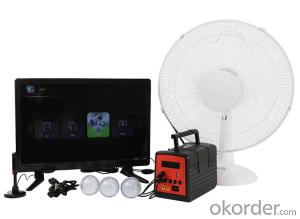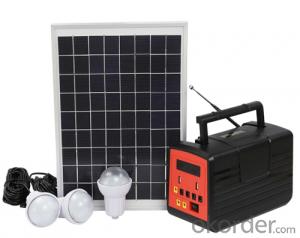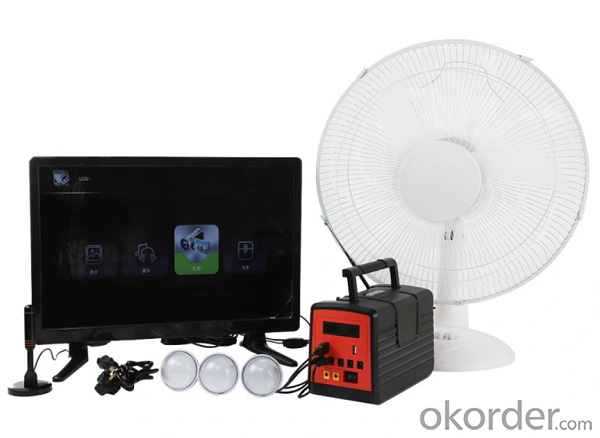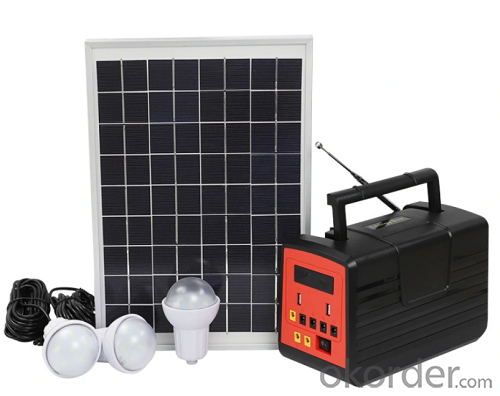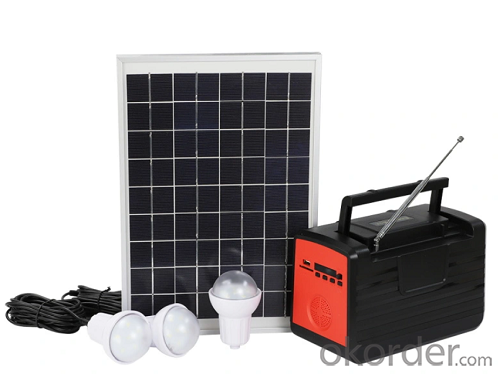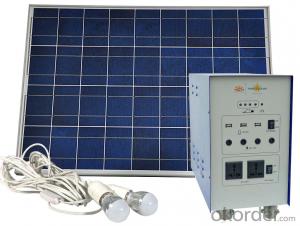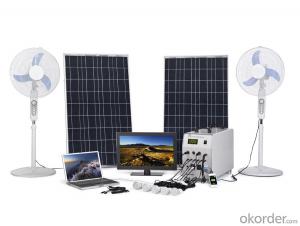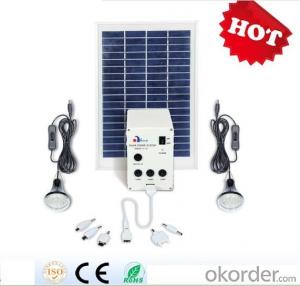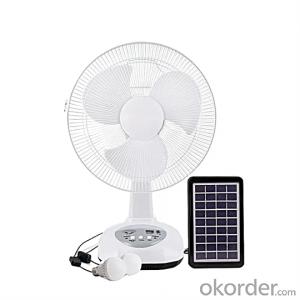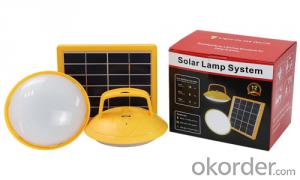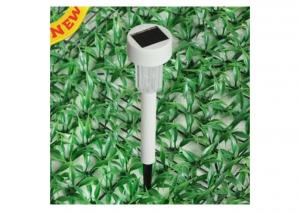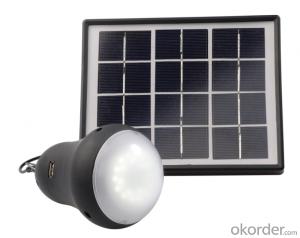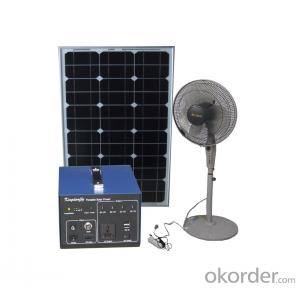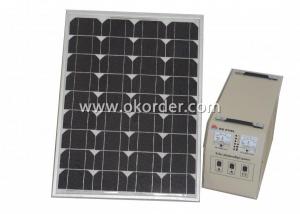Active Solar Energy Systems - Multifunctional Solar Home Lighting Energy System Generator with LED Bulbs
- Loading Port:
- Shekou
- Payment Terms:
- TT OR LC
- Min Order Qty:
- 10 set
- Supply Capability:
- 1000 set/month
OKorder Service Pledge
OKorder Financial Service
You Might Also Like
Specification

1. Specifications of Multifunctional Solar Home Lighting Energy System Generator with LED Bulbs
| Solar panel | 1*10W/18V | with 5m cable |
| Battery | 12V/7000mAh | SLA integrated battery |
| Lighting source | 3*3W LED bulbs | 50,000hrs lifespan |
| Working time | 27hrs for 1 bulb 18hrs for 2 bulbs 9hrs for 3 bulbs | afrer fully charged |
| Accessory | 1* 5 USB mobile charger 1* 5m connecting cable 3* 5m on/off cable | included |
Model NO.: PS-K025R
Working Time: 9-27 Hrs
Charging Time: 8 Hrs
Way of Charging: by Solar or by AC Adapter
Functions: Lighting/ Mobile Charging /DC Fan
Warranty: 1 Year Real Guaranty
Specification: CE, ROHS
Origin: Shenzhen, China
HS Code: 850131000
2. Advantages of Multifunctional Solar Home Lighting Energy System Generator with LED Bulbs
- Economic and energy saving
- After one day fully charge, support lighting for 9 hours for 3 bulbs
- Ideal for home use, such as cooking, room lighting, reading...
3. Images of Multifuntional Solar Home Lighting Energy System Generator with LED Bulbs


4. Delivery details
Sea transport: carton,pallet
- Q: Can solar energy systems be used for powering emergency response systems?
- Absolutely, emergency response systems can definitely utilize solar energy systems for power. Solar power is a dependable and sustainable energy source that can be harnessed to supply electricity to vital infrastructure in times of emergency. Various emergency response facilities, such as command centers, hospitals, fire stations, and communication towers, can have these systems installed. One of the major benefits of solar energy systems is their capacity to generate power even when the grid is down or damaged. Compared to traditional electricity sources that may become inaccessible or unreliable during emergencies like natural disasters or power outages, solar power depends on sunlight and can continue producing electricity as long as there is sunlight available. Furthermore, solar energy systems can be equipped with battery storage, allowing them to store excess energy generated during the day for use during the night or cloudy weather. This guarantees a continuous and uninterrupted power supply to emergency response systems, enabling them to function efficiently and effectively. In addition, solar energy systems have minimal maintenance requirements and are durable, which makes them highly suitable for emergency response applications. They also reduce reliance on fossil fuels and help mitigate the environmental impact associated with conventional energy sources. In conclusion, solar energy systems are an ideal solution for powering emergency response systems. Their ability to provide reliable and sustainable electricity, even in the absence of a functional grid, makes them a valuable asset during critical situations.
- Q: Can a solar energy system be used in areas with high levels of snowfall?
- Yes, a solar energy system can be used in areas with high levels of snowfall. While snow can temporarily reduce the efficiency of solar panels by covering them and blocking sunlight, it does not completely render the system useless. There are a few ways to overcome this challenge: 1. Tilted panels: By installing solar panels at an angle, the snow can slide off more easily, allowing the panels to continue generating electricity. This is especially effective if the panels are installed at a steeper angle. 2. Snow removal: In areas with frequent snowfall, it may be necessary to periodically remove snow from the solar panels. This can be done manually or through automated systems, such as brushes or heating elements that melt the snow. 3. Increased panel surface area: By installing additional panels, the system can compensate for the reduced efficiency during snowy periods. This helps ensure that even with some panels covered in snow, the overall energy production remains sufficient. 4. Net metering: In regions with high snowfall, net metering can be utilized to offset the reduced solar energy production during winter months. Excess energy generated during sunny periods can be exported to the grid, and in return, energy can be pulled from the grid during times of lower production. 5. Battery storage: By incorporating battery storage into the solar energy system, excess energy generated during sunny periods can be stored for use during snow-covered periods. This ensures a continuous supply of electricity even when snowfall affects the system's immediate production. While snowfall can present some challenges for solar energy systems, with proper design, installation, and maintenance, they can still be effectively used in areas with high levels of snowfall. Advances in technology and innovative solutions continue to improve the resilience and performance of solar energy systems in snowy conditions.
- Q: Can solar energy systems be used for wastewater treatment?
- Yes, solar energy systems can be used for wastewater treatment. Solar energy can power various components of a wastewater treatment system, such as pumps, aerators, and disinfection units, reducing or eliminating the need for grid electricity. Solar-powered wastewater treatment systems are not only environmentally friendly but also cost-effective, making them a sustainable solution for remote or off-grid areas where traditional infrastructure is not readily available.
- Q: Can solar energy systems be used in areas with strict noise regulations?
- Yes, solar energy systems can be used in areas with strict noise regulations as they operate silently. Solar panels do not produce any noise as they convert sunlight into electricity through a silent process without the need for any mechanical components. Therefore, they are an excellent option for areas where noise restrictions are in place.
- Q: Can solar energy systems be used in urban areas?
- Yes, solar energy systems can be used in urban areas. In fact, urban areas provide several advantages for solar energy systems, including available rooftops and vertical surfaces for solar panel installation, a dense population that can benefit from renewable energy, and reduced transmission losses due to shorter distances between energy generation and consumption. Additionally, advancements in solar technology have made it possible to integrate solar panels into various urban infrastructure, such as streetlights, bus shelters, and building facades, making solar energy systems a viable and sustainable solution in urban environments.
- Q: How do solar energy systems impact the stability of the electricity grid?
- Solar energy systems can have both positive and negative impacts on the stability of the electricity grid. On one hand, solar energy systems can reduce strain on the grid by generating electricity during peak demand times, thus reducing the need for additional power sources and enhancing grid reliability. On the other hand, the intermittent nature of solar power can pose challenges to grid stability, as sudden fluctuations in solar generation can impact the balance between electricity supply and demand. However, with the integration of advanced technologies, such as energy storage systems and smart grid management, these challenges can be effectively mitigated, ensuring a stable and resilient electricity grid system.
- Q: Can solar energy systems be installed on airports or transportation hubs?
- Yes, solar energy systems can be installed on airports or transportation hubs. In fact, many airports around the world have already embraced solar power as a clean and sustainable energy source. These systems can be installed on rooftops, parking lots, or even as ground-mounted arrays near the facilities. Solar energy can help airports and transportation hubs reduce their carbon footprint, lower energy costs, and contribute to a greener and more sustainable future.
- Q: Can solar energy systems be used for powering outdoor signage or billboards?
- Yes, solar energy systems can indeed be used to power outdoor signage or billboards. Solar panels can be installed on the rooftops, nearby poles, or on the billboard structure itself to harness sunlight and convert it into electricity. This renewable energy source provides a sustainable and cost-effective solution for powering outdoor advertising, reducing reliance on traditional grid electricity and minimizing environmental impact.
- Q: Can a solar energy system be installed in areas with high pollution levels?
- Yes, a solar energy system can be installed in areas with high pollution levels. While pollution may slightly reduce the efficiency of the system, solar panels can still generate electricity even in polluted environments. Additionally, installing solar energy systems in such areas can help in reducing reliance on polluting energy sources and contribute to cleaner air and environmental sustainability.
- Q: Can solar energy systems be used to power remote locations?
- Yes, solar energy systems can definitely be used to power remote locations. In fact, solar energy is particularly well-suited for remote applications where access to the conventional power grid may be limited or non-existent. Solar panels can be installed in remote areas that receive adequate sunlight, allowing for the generation of electricity even in off-grid locations. Solar energy systems for remote locations typically consist of photovoltaic (PV) panels, which convert sunlight into electricity, and a battery storage system to store excess energy for use during non-sunlight hours. In this way, solar energy can provide a reliable and continuous power supply even in areas without access to the grid. Remote locations such as rural communities, remote research facilities, off-grid cabins, and telecommunications towers can benefit greatly from solar energy systems. They offer a sustainable and renewable source of energy, reducing reliance on fossil fuels and reducing environmental impact. Additionally, solar energy systems require minimal maintenance and are cost-effective in the long run, making them an ideal solution for powering remote locations.
Send your message to us
Active Solar Energy Systems - Multifunctional Solar Home Lighting Energy System Generator with LED Bulbs
- Loading Port:
- Shekou
- Payment Terms:
- TT OR LC
- Min Order Qty:
- 10 set
- Supply Capability:
- 1000 set/month
OKorder Service Pledge
OKorder Financial Service
Similar products
Hot products
Hot Searches
Related keywords
